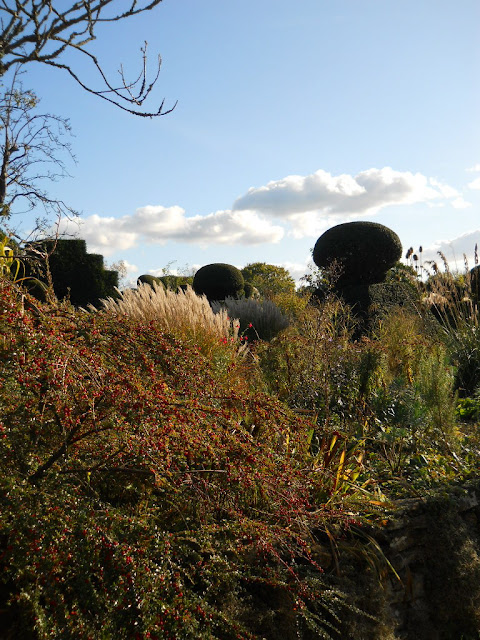It is hard to know where to start when writing and thinking about Great Dixter. This garden has been written about and photographed extensively and I have poured over books on this garden and listened to other gardeners talk about their experience visiting and working in this garden. I had even heard Fergus Garrett, the head gardener, with all his energy and exuberance, give a talk on the gardens at Great Dixter. I was fully prepared to be exceptionally impressed. The garden was beautiful, innovative and challenging, but nothing can prepare you for the way a place feels. There was an undercurrent of energy, a life force; gardeners seemed to be running in their work, plants seemed to be growing taller, smarter, with more gusto, and I have never seen more stunningly beautiful weeds. Upon arrival we found Fergus Garrett hard at work shoveling soil into a smoking, clunking, banging sterilizing machine happily making Great Dixter's own potting mix. He said a cheery hello and ushered us through a gate pointing us in the direction of the tropical garden, and so begins the tour....
This is a view looking down on the tropical garden from the house. None of the photographs I took inside that garden do it any justice; it was a jungle of mammoth plants in a fascinating textural array of foliage and unusual flowers. Immediately one must give up any hope of identifying plants, there are no tags and there are just too many to try and sort it out. I enjoyed it immensely, I was able to really enjoy the overflowing tangle of plants, all humming along in the great garden! We couldn't have seen it a moment later as the threat of frost was in the air and soon all these gems would be dug and put safely under glass. This garden was a originally a rose garden until Christopher Lloyd wanted a change. The idea of change permeates the place, plants are constantly rearranged in order to try new combinations and to showcase certain plants at different times of year.
Aster latiflorus var. horizontalis lining the pathway.
A wall of Calamagrostis x acutiflora 'Karl Foerster' made into a hedge of sorts. Instead of the deep black green of the yews, which I love, it is a hedge of bright bleached light.
A interesting cross section of greenery.
The structure of the upward, snaking, see- through Salvia was such a contrast in shape and form.
As we all sat on a bench we were confronted with this dense wall of plant material, with colors hanging together perfectly. The orange red of Tagetes 'Cinnabar,' in tune with the distant tip of the lime green Caltalpa, the deep green of the pillared juniper, the snowy silvery seed heads of the Anaphalis and the bronze purple of the stately fennel.
And this beautiful garden? It is a holding bed!
And now the much photographed Mixed Border. It is a spectacular sight, very deep and bursting full of wonderful plant combinations that are constantly on the move. In this moment, I couldn't imagine it any other way! In the foreground is the well respected Teasel, a self seeder, that is left to spring up at the edges of things. Its vertical structure, rusty golden hue, and outrageous seed heads give so much shape and spontaneity to the gardens.
These giant cardoons, with their big floppy seedheads, loom large in the back of the border. In this light the yew hedge picks up the shadows of these top heavy characters.
Last stop on the tour was the Sunken Garden glowing in the low, heady light.
I recently came across a video of Christopher Lloyd and Rosemary Verey wandering through Great Dixter discussing plants and ideas. A wonderful picture of the garden and two amazing gardeners.



















































